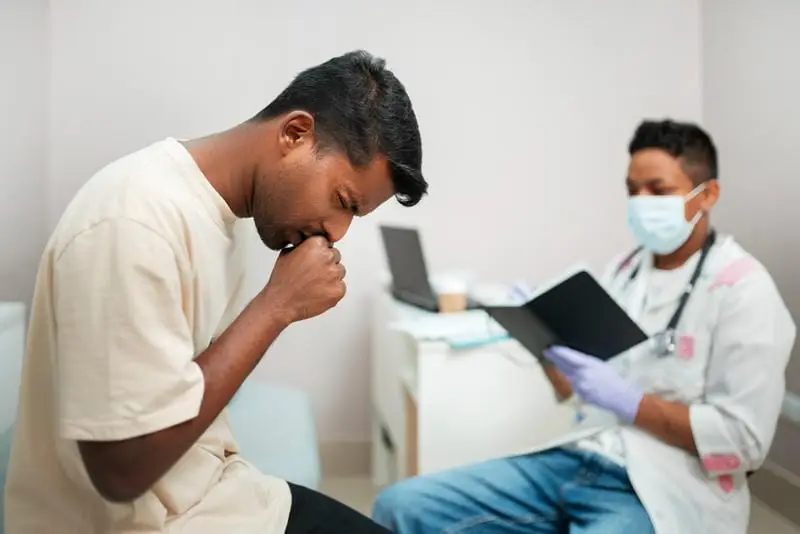- Published on: May 04, 2022
- 2 minute read
- By: Second Medic Expert
Lung Cancer Causes, Symptoms, Diagnosis & Treatment
What Causes Lung Cancer?
There is no one answer to this question as lung cancer can be caused by a variety of things, including exposure to tobacco smoke, radon gas, asbestos fibers, and secondhand smoke. However, the most common cause of lung cancer is smoking cigarettes. In fact, smoking is responsible for about 85% of all lung cancer cases in the United States.
Symptoms of Lung Cancer
Lung cancer symptoms can differ depending on how advanced the disease is. In its early stages, lung cancer may not cause any symptoms at all. As it progresses, however, you may start to experience cough (with or without blood), chest pain, shortness of breath, trouble swallowing,
Lung cancer is the leading cause of cancer death in men and women in the United States. Smoking cigarettes is the main risk factor for developing lung cancer, but studies have shown that people who have never smoked cigarettes can also get lung cancer. The second leading cause of lung cancer is long-term exposure to radon gas. There are two main types of lung cancer, small cell lung carcinoma (SCLC) and non-small cell lung carcinoma (NSCLC). The type of lung cancer you have will play a role in what treatment options are available to you.
Cigarette smoking is responsible for approximately 85% of all lung cancers. Lung cancer symptoms can be hard to identify in the early stages of the disease. Many times, people don’t experience any symptoms until the cancer has spread. When present, common symptoms of lung cancer include:
-A cough that doesn’t go away or gets worse over time
-Chest pain that is often worse with deep breathiing, coughing or laughing
-Hoarseness
Approximately 1 out of 3 cancer deaths in the US is caused by lung cancer. The two main types of lung cancer are small cell lung carcinoma (SCLC) and non-small cell lung carcinoma (NSCLC). These two types of lung cancer differ in their histology, etiology, and response to treatment. Lung cancer can be caused by a number of risk factors, including smoking, asbestos exposure, air pollution, and radiation exposure. Smoking is by far the most important risk factor for developing lung cancer; it is estimated that about 90% of all lung cancers are due to smoking cigarettes.
While the exact cause of lung cancer is unknown, it is believed to be caused by a combination of genetic and environmental factors. The most common symptom of lung cancer is a cough that does not go away, but other symptoms may include shortness of breath, chest pain, or weight loss. If you experience any of these symptoms, it’s important to see your doctor right away so that they can rule out other potential causes and begin appropriate treatment.
There are two main types of lung cancer: non-small cell lung cancer (NSCLC) and small cell lung cancer (SCLC). NSCLC makes up around 85% of all lung cancers, while SCLC accounts for the remaining 15%. The two types differ in their cells' structure and how they grow.
Lung cancer symptoms can include a cough that does not go away, shortness of breath, chest pain, hoarseness, weight loss, and fatigue. Lung cancer is the leading cause of cancer-related deaths worldwide, and it is estimated that 1 in 8 men and 1 in 9 women will develop lung cancer in their lifetime. There are two main types of lung cancer: small cell lung cancer (SCLC) and non-small cell lung cancer (NSCLC). The most common symptom of lung cancer is a cough that does not go away, and other symptoms include shortness of breath, chest pain, hoarseness, weight loss, and fatigue.
Lung cancer causes more deaths than the next three most common cancers combined (colorectal, breast, and pancreatic). Smoking is by far the most important risk factor for lungcancer. Tobacco smoking is estimated to be responsible for 87% of lung cancer cases in men and 70% in women. The risk of developing lung cancer increases with the number of cigarettes smoked per day and the duration of smoking. Cigarette smokers have about 20 times the risk of developing lung cancer as compared to non-smokers.
Symptoms of lung cancer include coughing up blood, difficulty breathing, and persistent pain in the chest or shoulder. If you experience any of these symptoms, it's important to see a doctor right away. A diagnosis can be made through a combination of imaging tests (X-ray, CT scan, PET scan) and biopsies (removing tissue to examine under a microscope). Treatment options for lung cancer depend on the stage of the disease and can include surgery, chemotherapy, radiation therapy, or targeted therapy.
Our Services
Request A Callback
Recent Posts
TB disease symptoms
Dec 26,2025
early signs of hormonal imbalance
Dec 26,2025
common nutritional deficiencies in adults
Dec 26,2025
how air pollution impacts respiratory health
Dec 26,2025









